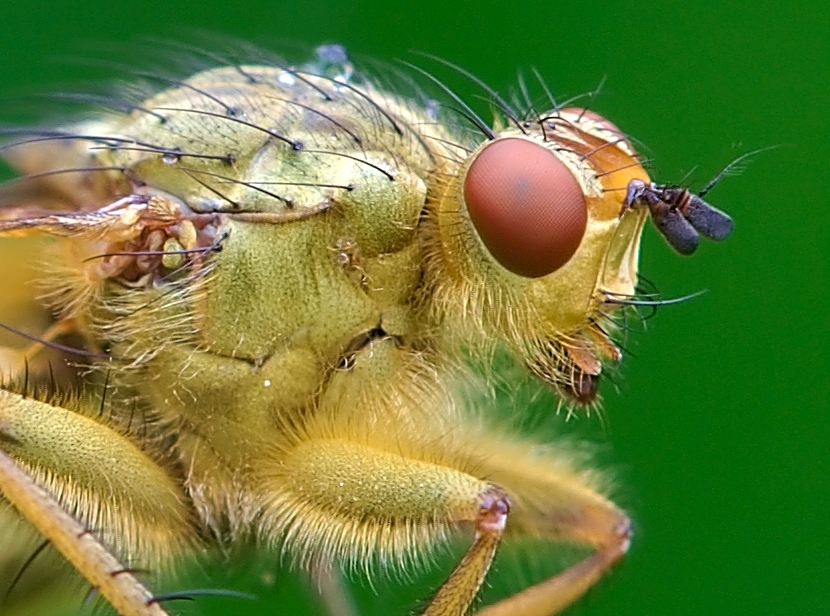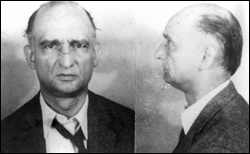|
Microphotograph
Microphotographs are photographs shrunk to microscopic scale.Focal encyclopedia of photography By Michael R. Peres Focal Press, 2007 , 846 pages Microphotography is the art of making such images. Applications of microphotography include such as in the Hollow Nickel Case, where they are known as |
Stanhope (optical Bijou)
Stanhopes or Stanho-scopes are optical devices that enable the viewing of microphotographs without using a microscope.Focal encyclopedia of photography' By Michael R. Peres Focal Press, 2007 The Strad Magazine October 2005 pp. 51-54 They were invented by in 1857. Dagron bypassed the need for an expensive microscope to view the microscopic photographs by attaching the microphotograph at the end of a modified . He called the devices ''bijoux pho ... [...More Info...] [...Related Items...] OR: [Wikipedia] [Google] [Baidu] |
Microform
Microforms are scaled-down reproductions of documents, typically either films or paper, made for the purposes of transmission, storage, reading, and printing. Microform images are commonly reduced to about 4% or of the original document size. For special purposes, greater optical reductions may be used. Three formats are common: microfilm (reels), microfiche (flat sheets), and aperture cards. Microcards, also known as "micro-opaques", a format no longer produced, were similar to microfiche, but printed on cardboard rather than photographic film. History Using the daguerreotype process, John Benjamin Dancer was one of the first to produce microphotographs, in 1839. He achieved a reduction ratio of 160:1. Dancer refined his reduction procedures with Frederick Scott Archer's wet collodion process, developed in 1850–51, but he dismissed his decades-long work on microphotographs as a personal hobby and did not document his procedures. The idea that microphotography could be no ... [...More Info...] [...Related Items...] OR: [Wikipedia] [Google] [Baidu] |
John Benjamin Dancer
John Benjamin Dancer (8 October 1812 – 24 November 1887) was a British scientific instrument maker and inventor of microphotography. He also pioneered stereography. Life By 1835, he controlled his father's instrument making business in Liverpool. He was responsible for various inventions, but did not patent many of his ideas. In 1856, he invented the stereoscopic camera (GB patent 2064/1856). He died at the age of 75 and was buried at Brooklands Cemetery, Sale, Greater Manchester. Dancer improved the Daniell cell by introducing the porous pot cell, which he invented in 1838. He was a leading inventor and practitioner in the emerging field of microphotography, work he began shortly after the Daguerreotype process was first announced in 1839. His novel uses of microphotography, such as "the reduction of the 680-word tablet erected in memory of the electrician William Sturgeon to a positive one-sixteenth of an inch in diameter", attracted much public attention. Dancer was re ... [...More Info...] [...Related Items...] OR: [Wikipedia] [Google] [Baidu] |
Microprinting
Microprinting is the production of recognizable patterns or characters in a printed medium at a scale that requires magnification to read with the naked eye. To the unaided eye, the text may appear as a solid line. Attempts to reproduce by methods of photocopy, image scanning, or pantograph typically translate as a dotted or solid line, unless the reproduction method can identify and recreate patterns to such scale. Microprint is predominantly used as an anti-counterfeiting technique, due to its inability to be easily reproduced by widespread digital methods. While microphotography precedes microprint, microprint was significantly influenced by Albert Boni in 1934 when he was inspired by his friend, writer and editor Manuel Komroff, who was showing his experimentations related to the enlarging of photographs. It occurred to Boni that if he could reduce rather than enlarge photographs, this technology might enable publication companies and libraries to access much greater quan ... [...More Info...] [...Related Items...] OR: [Wikipedia] [Google] [Baidu] |
Macro Photography
Macro photography (or photomacrography or macrography, and sometimes macrophotography) is extreme close-up photography, usually of very small subjects and living organisms like insects, in which the size of the subject in the photograph is greater than life size (though ''macrophotography'' also refers to the art of making very large photographs). By the original definition, a macro photograph is one in which the size of the subject on the negative or image sensor is life size or greater. In some senses, however, it refers to a finished photograph of a subject that is greater than life size. The ratio of the subject size on the film plane (or sensor plane) to the actual subject size is known as the reproduction ratio. Likewise, a macro lens is classically a lens capable of reproduction ratios of at least 1:1, although it often refers to any lens with a large reproduction ratio, despite rarely exceeding 1:1. Apart from technical photography and film-based processes, where the ... [...More Info...] [...Related Items...] OR: [Wikipedia] [Google] [Baidu] |
Mental Hospital Philadelphia PA Micrograph By Langenheim & Co
{{disambig ...
Mental may refer to: * of or relating to the mind Films * ''Mental'' (2012 film), an Australian comedy-drama * ''Mental'' (2016 film), a Bangladeshi romantic-action movie * ''Mental'', a 2008 documentary by Kazuhiro Soda * ''Mental'', a 2014 Odia language remake of the 2010 Telugu film ''Seeta Ramula Kalyanam'' * ''Jai Ho'', a 2014 Indian action drama film originally titled ''Mental'' Other uses * ''Mental'' (TV series), a 2009 TV series produced by Fox Telecolombia * ''Mental'' (album), a 2014 album by KJ-52 *"Mental", a song by Eels from their 1996 album ''Beautiful Freak'' See also * * Mental disability (other) * Mental foramen, an opening on the anterior surface of the mandible * Mental health Mental health encompasses emotional, psychological, and social well-being, influencing cognition, perception, and behavior. It likewise determines how an individual handles Stress (biology), stress, interpersonal relationships, and decision-maki ... [...More Info...] [...Related Items...] OR: [Wikipedia] [Google] [Baidu] |
Espionage
Espionage, spying, or intelligence gathering is the act of obtaining secret or confidential information (intelligence) from non-disclosed sources or divulging of the same without the permission of the holder of the information for a tangible benefit. A person who commits espionage is called an ''espionage agent'' or ''spy''. Any individual or spy ring (a cooperating group of spies), in the service of a government, company, criminal organization, or independent operation, can commit espionage. The practice is clandestine, as it is by definition unwelcome. In some circumstances, it may be a legal tool of law enforcement and in others, it may be illegal and punishable by law. Espionage is often part of an institutional effort by a government or commercial concern. However, the term tends to be associated with state spying on potential or actual enemies for military purposes. Spying involving corporations is known as industrial espionage. One of the most effective ways ... [...More Info...] [...Related Items...] OR: [Wikipedia] [Google] [Baidu] |
Hollow Nickel Case
The Hollow Nickel Case (or the Hollow Coin) was the FBI investigation that grew out of the discovery of a container disguised as a U.S. coin and containing a coded message, eventually found to concern espionage activities of William August Fisher ( Rudolf Ivanovich Abel) on behalf of the Soviet Union. Background On June 22, 1953, a newspaper boy (fourteen-year-old Jimmy Bozart), collecting for the ''Brooklyn Eagle'', at an apartment building at 3403 Foster Avenue in the New York City borough of Brooklyn, was paid with a nickel (U.S. five-cent piece) that felt too light to him. When he dropped it on the ground, it popped open, revealing that it contained microfilm. The microfilm contained a series of numbers. He told the daughter of a New York City Police Department officer, and that officer told a detective who in two days told an FBI agent about the strange nickel. After agent Louis Hahn of the FBI obtained the nickel and the microfilm, the agency tried to find out where ... [...More Info...] [...Related Items...] OR: [Wikipedia] [Google] [Baidu] |
Daguerreotype
Daguerreotype (; french: daguerréotype) was the first publicly available photographic process; it was widely used during the 1840s and 1850s. "Daguerreotype" also refers to an image created through this process. Invented by Louis Daguerre and introduced worldwide in 1839, the daguerreotype was almost completely superseded by 1860 with new, less expensive processes, such as ambrotype (collodion process), that yield more readily viewable images. There has been a revival of the daguerreotype since the late 20th century by a small number of photographers interested in making artistic use of early photographic processes. To make the image, a daguerreotypist polished a sheet of silver-plated copper to a mirror finish; treated it with fumes that made its surface light-sensitive; exposed it in a camera for as long as was judged to be necessary, which could be as little as a few seconds for brightly sunlit subjects or much longer with less intense lighting; made the resulting late ... [...More Info...] [...Related Items...] OR: [Wikipedia] [Google] [Baidu] |
Frederick Scott Archer
] Frederick Scott Archer (1813 – 1 May 1857) was an English photographer and sculptor who is best known for having invented the photographic collodion process which preceded the modern gelatin emulsion. He was born in either Bishop's Stortford or Hertford, within the county of Hertfordshire, England (United Kingdom of Great Britain and Ireland) and is remembered mainly for this single achievement which greatly increased the accessibility of photography for the general public. Life Scott Archer was the second son of a butcher in Bishops Stortford in Hertfordshire who went to London to take an apprenticeship as a goldsmith and silversmith with a Mr Massey of 116 Leadenhall Street. On the recommendation of Edward Hawkins he trained at the Royal Academy Schools a sculptor and found calotype photography useful as a way of capturing images of his sculptures. Dissatisfied with the poor definition and contrast of the calotype and the long exposures needed, Scott Archer invented t ... [...More Info...] [...Related Items...] OR: [Wikipedia] [Google] [Baidu] |
Collodion Process
The collodion process is an early photographic process. The collodion process, mostly synonymous with the "collodion wet plate process", requires the photographic material to be coated, sensitized, exposed, and developed within the span of about fifteen minutes, necessitating a portable darkroom for use in the field. Collodion is normally used in its wet form, but it can also be used in dry form, at the cost of greatly increased exposure time. The increased exposure time made the dry form unsuitable for the usual portraiture work of most professional photographers of the 19th century. The use of the dry form was therefore mostly confined to landscape photography and other special applications where minutes-long exposure times were tolerable. History Gustave Le Gray first theorized about the collodion process, publishing a method in 1850 that was "theoretical at best", but Frederick Scott Archer was credited with the invention of the process, which he created in 1848 and publ ... [...More Info...] [...Related Items...] OR: [Wikipedia] [Google] [Baidu] |
Audiovisual Introductions In 1839
Audiovisual (AV) is electronic media possessing both a sound and a visual component, such as slide-tape presentations, films, television programs, corporate conferencing, church services, and live theater productions. Audiovisual service providers frequently offer web streaming, video conferencing, and live broadcast services. Computer-based audiovisual equipment is often used in education, with many schools and universities installing projection equipment and using interactive whiteboard technology. Components Aside from equipment installation, two significant elements of audiovisual are wiring and system control. If either of these components are faulty or missing, the system may not demonstrate optimal performance. Wiring is a skill that not only requires proper cable rating selection based on a number of factors, including distance to the main rack, frequency and fire codes, but wires should also be out of sight, behind the walls and in the ceiling, when possible. Sys ... [...More Info...] [...Related Items...] OR: [Wikipedia] [Google] [Baidu] |







.jpg)
